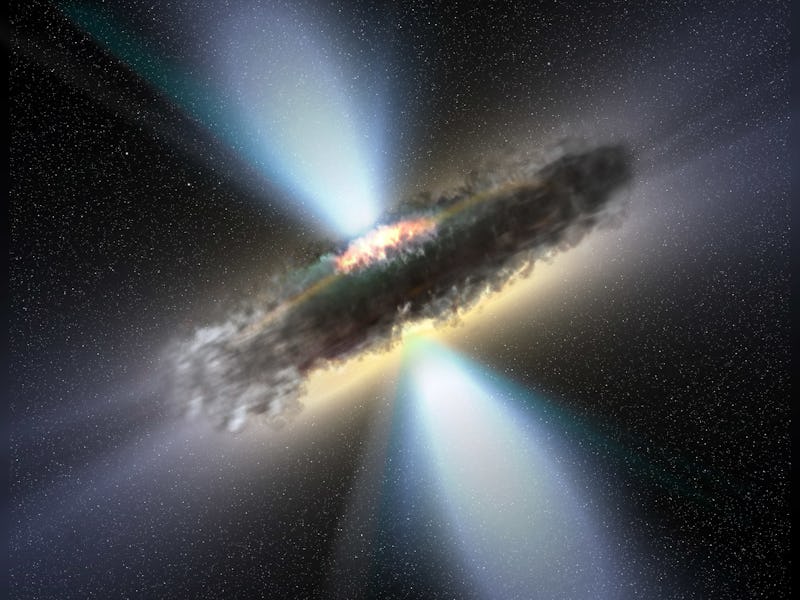Jeff Steinhauer, an experimental physicist at the Technion-Israel Institute of Technology in Haifa, created a black hole in his laboratory.
Sure, it wasn’t a true black hole — it devoured sound waves, instead of sucking in all the matter around it and destroying the earth — but it does represent the first time scientists have observed a special type of radiation initially theorized by Stephen Hawking 42 years ago. If Steinhauer can prove that his sonic black holes provide a close enough analogy to the real deal, this would be a huge moment in our understanding of the physical universe.
Black holes are notoriously difficult to observe in real life. But Steinhauer believes he’s found the next best thing. It’s a model black hole that eats up sound, instead of light. It uses rubidium atoms supercooled to barely above absolute zero, and accelerates them to a speed beyond what sound can travel through. This creates a sort of event horizon, a point-of-no-return past which sound cannot exist.
Decades ago Hawking theorized that black holes aren’t truly black — they would emit a very weak radiation as matter-antimatter pairs of photons become trapped on opposite sides of the event horizon. In Steinhauer’s experiments, the analogue to Hawking radiation is made with phonons, which are discrete units of quantum mechanical sound. And, according to results published in Nature Physics, he’s been able to measure this sonic radiation by capturing correlations of phonons on either side of the horizon.
Many in the physics community are cautiously optimistic about the news. Some are calling for independent verification that Steinhauer’s experiments really demonstrated the quantum entanglement predicted by Hawking.
“Big results needs solid proof,” Bill Unruh, a physicist with the University of British Columbia, tells New Scientist. Unruh was among the first to theorize that black hole analogues could be built in labs, and that they would also show a sort of Hawking radiation. “In any case, I regard this as a very beautiful experiment, one that people have thought of doing for 10 years now, but he is the first to do so. That he has seen the correlations of emissions by the horizon, whether entangled or not, is a real coup.”
If confirmed, the discovery would be “a triumph for Hawking, perhaps in the same sense that the expected detection of the Higgs boson was a triumph for Higgs and company,” Leonard Susskind, a theoretical physicist at Stanford, tells Nature.
